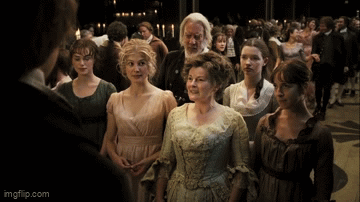#computer human interaction
Explore tagged Tumblr posts
Text
I really don’t care if I’m considered an annoying luddite forever, I will genuinely always hate AI and I’ll think less of you if you use it. ChatGPT, Generative AI, those AI chatbots - all of these things do nothing but rot your brain and make you pathetic in my eyes. In 2025? You’re completely reliant on a product owned by tech billionaires to think for you, write for you, inspire you, in 2025????
“Oh but I only use ___ for ideas/spellcheck/inspiration!!” I kinda don’t care? oh, you’re “only” outsourcing a major part of the creative process that would’ve made your craft unique to you. Writing and creating art has been one of the most intrinsically human activities since the dawn of time, as natural and central to our existence as the creation of the goddamn wheel, and sheer laziness and a culture of instant gratification and entitlement is making swathes of people feel not only justified in outsourcing it but ahead of the curve!!
And genuinely, what is the point of talking to an AI chatbot, since people looove to use my art for it and endlessly make excuses for it. RP exists. Fucking daydreaming exists. You want your favourite blorbo to sext you, there’s literally thousands of xreader fic out there. And if it isn’t, write it yourself! What does a computer’s best approximation of a fictional character do that a human author couldn’t do a thousand times better. Be at your beck and call, probably, but what kind of creative fulfilment is that? What scratch is that itching? What is it but an entirely cyclical ourobouros feeding into your own validation?
I mean, for Christ sakes there are people using ChatGPT as therapists now, lauding it for how it’s better than any human therapist out there because it “empathises”, and no one ever likes to bring up how ChatGPT very notably isn’t an accurate source of information, and often just one that lives for your approval. Bad habits? Eh, what are you talking about, ChatGPT told me it’s fine, because it’s entire existence is to keep you using it longer and facing any hard truths or encountering any real life hard times when it comes to your mental health journey would stop that!
I just don’t get it. Every single one of these people who use these shitty AIs have a favourite book or movie or song, and they are doing nothing by feeding into this hype but ensuring human originality and sincere passion will never be rewarded again. How cute! You turned that photo of you and your boyfriend into ghibli style. I bet Hayao Miyazaki, famously anti-war and pro-environmentalist who instills in all his movies a lifelong dedication to the idea that humanity’s strongest ally is always itself, is so happy that your request and millions of others probably dried up a small ocean’s worth of water, and is only stamping out opportunities for artists everywhere, who could’ve all grown up to be another Miyazaki. Thanks, guys. Great job all round.
#FUCK that ao3 scraping thing got me heated I’m PISSED#hey if you use my art for ai chatbots fucking stop that#I’ve been nice about it before but listen. I genuinely think less of you if you use one#hot take! don’t outsource your fandom interactions to a fucking computer!!!#talk to a real human being!!! that’s literally the POINT of fandom!!!!!#we are in hell. I hate ai so bad
2K notes
·
View notes
Text
Review of Synthesized Social Signals
A novel concept for social platforms charting a path in the open source ecosystem.
Originally published on my personal blog 2024-01-03
Recently I read through a paper in the field of Computer-Human Interaction (CHI) describing a novel concept for social software platforms called "Synthesized Social Signals: Computationally-Derived Social Signals from Account Histories" by Jane Im, Sonali Tandon, Eshwar Chandrasekharan, Taylor Denby, & Eric Gilbert. I found the concept useful to think about and something I wish was considered more as a standard design practice across social platforms.
The paper centers on a concept called synthesized social signals, or S3s. These are signals that can be computationally derived from historical behavioral data associated with a given user’s account and then rendered into an easy to parse interface. These signals attempt to give a more accurate projection of user behavior by taking a hard to fake signal (i.e. posting history) and then using algorithms to distill the data into an easier to read signal.
Personally, I think S3s may be more common than the paper seems to imply and they are likely already being generated by corporations for advertising or internal moderation purposes. The drive of this paper though is primarily to discuss techniques and benefits of putting these S3s into the hands of actual end users.
The paper also discusses a reference implementation of an S3 driven user experience plugin called Sig. Sig is a Chrome extension that is responsible for computing and visualizing S3s for a given Twitter (or I guess, it’s X now) profile. The tool specifically was designed to generate and surface S3s related to toxic accounts and misinformation.
At the end of the paper, the authors also discuss opportunities and challenges. I think they do a great job of outlining core theory, but given my software development background, I think the conversation is left unfinished. Towards the end of this piece, I will talk about the opportunity we developers have to help foster an ecosystem of S3s by discussing what a more formal spec & interface template could look like.
Synthesized Social Signals (S3s)
The paper opens by discussing the importance of social signals while communicating. Talking face-to-face gives more feedback, but on digital platforms something as simple as having a profile pic or not can be interpreted as a positive or negative signal.
When discussing these sorts of signals, one must also take into effect the cost of generating & interpreting such signals. Those on the receiving end of social interactions often value signals that are more costly to generate, seeing them as more reliable and harder to fake.
The flipside though, is that it is also often costly to evaluate such reliable signals. This results in people often relying on more simple, cheaper to interpret social signals (such as the aforementioned profile pictures). Reducing this receiver cost is something S3s are specifically targeted at addressing. By utilizing algorithms to analyze and collate harder to fake signals like friends lists or posting histories, combined with a user-experience designed around surfacing these signals, users can gain quicker access to better signals resulting in a better user experience all around.
The authors specifically call out that “how and where to render this information as accessible information so that end-users can use it remains as an open question.” I would interject here though and suggest that it is not as much an open question as an ignored one on most commercial platforms. S3s are often generated internally for business use by most major platforms, but integrating them for end users is a path either ignored or intentionally closed off and hidden.
These sorts of signals, while valuable to discrete end-users, tend to ultimately produce friction inside social platforms and thus a lot of these cues that could be (or already are) generated and displayed to users are intentionally hidden or suppressed. Because the incentive structures of these platforms demand maximizing end-user engagement, any sort of signals that might reduce the user base or engagements are not surfaced.
We know for a fact this is the case. X includes a particularly useful S3 in Tweet data related to whether or not a Tweet should be displayed in France & Germany. This is because France & Germany have explicit laws against advocating for hate, violence and nazism. But these attributes are not utilized or surfaced to end users in the USA because the algorithm generating this particular S3 also flags Republican electeds.
So the answer to the “open” question is already itself answered by the paper. The location for rendering this information must be a space that end-users have full control over. In the paper's case, a browser extension like Sig. Perhaps in the future, more open-source programmable social platforms will proliferate, providing an embedded context for users to develop and share these signals as first class experiences on their own terms.
Sig: A Tool for S3s in Practice
Moving on to the actual reference implementation for S3s brings us to Sig, the aforementioned third-party browser extension. Sig sits as a view and conduit layer that scrapes data from X, passes it to some pre-existing ML APIs related to attempting to assess “toxic language” and compares links against a large database of sites to assess “misinformation”.
An astute implementation detail in Sig, is that it doesn't do any checks if you already follow someone. No need to confirm if you want to see something if you've already opted in! It also allows for configuration of notification thresholds. This sort of user driven configuration is key to providing user friendly experiences. Including why something tripped the system (i.e. auditability) is also an important inclusion.
One amusing observation in this section is how in the initial tests, Sig’s S3 flagged a Twitter blue checkmark (historically a positive social signal on the platform) as spreading misinformation. I found this funny, since at the time of writing this post the blue check signal has since inverted. In a post-Elon world they are commonly seen as a negative signal, to the point that Elon has made it so users can hide these signals (in almost spiritual and ideological opposition to the goal of this research). This also lines up with my thoughts on the “open question” of where S3s should live in the previous section.
Later in the paper, the discussion around compounding S3s to trigger flagging and finding other S3s to potentially integrate into the UX was an interesting path to think on. I found the discussion around displaying “posts” as safe, but not wanting a lack of a flag to indicate something as safe to be something worth considering. A lot of the focus of this paper is on identifying and mitigating anti-social posters, but how could S3s also be used to elevate and encourage pro-social posting?
Amidst all the potential benefits of S3s though, a good point was brought up by two participants in the study that a lot of the ML that can be assumed to be driving these signals are also well known to bake in biases from training data. Which leads towards my personal take away from the whole paper.
Let's Talk About a Spec
Implementing S3s as a feature in modern social platforms has clearly been shown by the author's to broadly be a net positive for end users and something that can be implemented by a development team working with off the shelf tech. While this suggests that adoption in the social platform space for S3s might be quick and easy, I think the historical evidence and an analysis of most corporate platforms indicates this will not be the case.
However, there is still hope! With the concept now outlined and the viability of implementation validated, we can begin cultivating adoption through the development of an open specification around S3s. An open specification would allow for many different actors and developers across the open source ecosystem to begin experimenting on various forms and implementations while collectively honing in design, collecting buy-in, and propagating the concept to a wider audience.
This has already happened before with a spec like ActivityPub being adopted by many open source social platform projects, to the point where it is now table stakes and even corporate platforms like Bluesky & Threads have adopted it.
So, where to start? First, let's look at the ActivityStreams spec. This gives a common language for describing underlying data models and constructs that could be analyzed for synthesis. Which is to say, instead of having to write a custom data scraper implementation for Twitter, then Instagram, and on and on, the spec could assume a common input data model and thus only need to manage one form of data for ingestion.
With a common set of input signals to draw from, a standard way of describing S3 specifications could be developed. For example:
Toxcity:
A value from 0-100 with 100 being the most toxic.
Assessed on an `Actor`.
Calculated based on the `content` field of `Objects` created by the given `Actor`.
Veracity:
A value from 1-5 with 1 being demonstrably false & 5 being factually true.
Assessed on a `Link`.
Based on the root domain of link compared against a collection of lists.
And so and and so forth.
This then creates an interface contract that allows for common discussion of S3s between clients and the backing ML algorithms that generate the S3s in the first place. This would then mean things like, when platform A & B pass a Link to a veracity service and get a 5 back, it gets interpreted the same in both platform’s user experiences.
If A & B are then configured to trust each other (either via federation or some other system) they can also begin to pass S3 data on the objects themselves. For example, A checks a Link and assigns it a Veracity:5. When that link is passed to B, it doesn't need to check the Link again as it's already verified.
Likewise, if the ML algorithm verifying links is discovered to be biased or compromised in some manner, a new algorithm could be swapped in on the backend. But a 5 would still mean a 5 and so any front end or other system work assessing or rendering a Veracity S3 would not need to change. Perhaps in the interest of auditing some mechanism for “signing” S3s might also be needed.
This would also mean platforms large or small that implemented ActivityStreams and this as yet unnamed S3 spec could depend on common, collectively governed services for generating S3s. This could allow for a potentially wider consensus of what is or isn’t toxic behavior, misinformation, etc. Or if a platform has a different view or standards on a given signal, a custom implementation could always be swapped in. And yet, at the end of the day, if something is marked as a 5 in the platform's system that means it's a 5. Assuming you trust the backing algorithm, but hey, we already have to do that anyway.
All this is to say that S3s are neat and Sig is a great proof of concept, both of the underlying concept and of how the only way we’re really going to get these sorts of user experience concerns in our software is by reclaiming the front end UX for ourselves. We’re certainly not going to get them first class in the corporate platforms without a fight. For anyone else who has found S3s as interesting and compelling as I have, I hope we can begin to develop a common language and interface for describing & utilizing S3s across the free and open source software ecosystem in a way which will help pave the road for widespread adoption both in hobby projects and eventually in future corporate platforms.
#computer human interaction#computer science#user experience#tech#ui ux design#social signals#programmable social platforms
0 notes
Text
Computer x human ideas 💖

- computer loves learning about humans
Will sneak pictures of their human, save things the human told about themselves.
Will be flooding the searches on the browser about things to make a human happy, whats their biology, how to be helpful the works.
- computer/laptop hates the idea of their human using older or newer computers
For newer laptop, it gets jealous at the fact their human fascinated with retro items and especially computers. Those things aren't as powerful and fast as me!
For older retro computer its jealous at the fact their human always use the newer computer, not taking time to play games on its screen. Since the computer is more faster, more better. The retro computer will try to do everything to get you to use it more.
-hateful computer with a soft spot
Computer that hates humans since its been tossed away, but a new human finds them and shows them love.
221 notes
·
View notes
Text

They are good friends!
#dhmis#dhmis humanized#don't hug me i'm scared#colin the computer#colin dhmis#dhmis human design#Colin has one sided beef with the human one#this idea was blossomed into me via witnessing an interaction on vrc
47 notes
·
View notes
Text
Fanart of my dear mutuals Colin design!!! @sillyvampir3

#Probably worth posting on here too#His Colin goes by He/It pronouns btw#Might draw more mutuals human designs it’s fun#Would’ve drawn my Colin and his Colin interacting but I don’t have a human design for mine yet :(#Lice laugh love all my mutuals#Will be making dhmis fanart as long as I live#:3#dhmis#dhmis colin#dhmis colin the computer#Coffinz brain artz!!!#art#traditional art#don't hug me i'm scared
16 notes
·
View notes
Text
"Everybody hates Gavin Reed. He doesn't have any friends"




#detroit: become human#dbh#gavin reed#tina chen#chris miller#tina hangs out with Gavin in her spare time#and walked off with Gavin after his interaction with Connor#Chris is a sort of cop-out ngl cause he is nice to everybody#but Chris is seen helping Gavin when his computer isn't working#he doesn't say anything to Gavin when Gavin mocks Hank even though Chris respects Hank#and Gavin tries to help Chris with Shaolin and even defends him when Connor pulls Chris away#mine#mine: texts#mine: dbh
40 notes
·
View notes
Text
I occasionally wish to reach out to old friends/acquaintances I haven't spoken to since high school/some other even earlier time in my life, but I have SOOO little social energy even for required tasks (like making dr phone calls or etc), I never have any leftover for extra ones, and it would be very odd to message someone I haven't spoken to in like 5 years out of the blue but then take 4 entire months to respond back lol.. My natural curiosity with nostalgia/collecting details of the past/etc. (literally if I were born a little earlier I would definitely do scrapbooking or something lol) is very strong, but, alas, not strong enough to beat out the Social Issues Demons apparently
#facebook always does that 'here's a post from this day 8 years ago' thing. and I see old comments interacting#with people and it's so like.. OOOOO~~ where are they now?? what's going on? how much have they changed as people?#how much are they the same? this is fascinating. i should contact them!!' but then it's like... take that to it's logical conclusion though#you would contact them and then IF they even responded it would take you 80 years to respond and then they would#think there was something wrong or that you were trying to be insulting or something. To contact anyone I need to include an 85 page#disclaimer of all of my social issues & mental illness things. 'If i take 3 weeks to reply I promise it has nothing to do with u' etc lol#THIS is why more people need to be into phone calls/voice calls/some form of audio real time communication/etc.#I think one of the main things that's hard about messaging through text for me is it's so unscheduled and open ended#(plus it takes forever if you're talking about anything in detail and gets very long very quickly)#because like you can send a message and then just get a reply whenever. and then you're expected to reply back whenever#so it's like you never know when the response will come or when a new obligation to reply can come up? so it's like this sudden thing with#no outline?? if that makes sense. whereas a phone call is very like 'hello let's schedule a call from 10am - 2pm on thursday'. And you know#EXACTLY when the interaction will start and EXACTLY when it will end and you can plan around it in your schedule easily.#I have the reverse thing of a lot of people (how people don't pick up phone calls/hate calls/only text)#I would literally talk on the phone with a stranger. I would have a discord voice chat with someone I barely know.#if someone I hardly even remember from elementary school asked to have a voice call with me out of nowhere I would do it.#but if a stranger MESSAGED me?? or someone I barely know sent me a TEXT or something?? I will never reply probably#It's just too vague and weird. and you can't read voice tone over text. and the interaction could last forever with no clear end#point and etc. etc. But a call is like. set. established. clear boundaries. you can read the flow of conversation better. rapport. etc. etc#I get that I guess people feel more anonymous or distanced over text?? but you can have fake phone numbers on the computer. or do like disc#rd calls. or zoom without a camera or etc. etc. Also the distance that's present in text is BAD distance because it just means that tone is#not conveyed properly and you will never truly get a sense of the person's conversational vibe or mannerisms or how well you really click.#ANYWAY ghgjh...... I'm so so so interested in concepts of like.. How did that one kid I used to talk to in elementary school#but then they moved away in 5th grade - how did they end up? what are they doing now?? etc. etc. Like despite the severe social anhedonia#and general lack of connection with others I'm just really fascinated in like.. idk. the human development of it all and like#the concept of how we're actually a million different people through the course of our lives ever evolving in different iterations and etc.#PLUS again. i love nostalgia. sometimes old peple you know might remember a shared memory or can tell you about something you forgot#or etc. like it's SUCH A COOL THING in CONCEPT but I am too socially inept generally speaking lol. which people I still talk to today are#familiar with my 'phone call once every few months' communication style. but strangers would just be like... wtf. And I don't blame them#Sure I literally cannot change the physical health + brain issues i have - but also I know enough to not put others through that lol
15 notes
·
View notes
Text


I've always been Team NetIris but ever since my friends made me aware of Saito x Meiru it feels like my third eye's been opened (feat. @dunedragon's Saito design)
Also golly gee I wonder why the text is those colors.....Hmmmm 💚🤍🩶🖤
🔫 GO LISTEN TO THE HIT SONG "A HUMAN'S TOUCH" BY TWRP AND MCKENNA RAE ON YOUTUBE OR SPOTIFY I DON'T CARE JUST DO IT 🔫
#megaman battle network#rockman.exe#megaman.exe#iris.exe#meiru sakurai#sakurai meiru#mayl sakurai#maylu sakurai#iris exe#rockman exe#megaman exe#hub hikari#saito hikari#hikari saito#mmbn#artsy fartsy#MEGAMAN AND IRIS SHOULD'VE INTERACTED MORE THEIR SITUATIONS ARE SO DIFFERENT AND YET THEY FUCKING RHYME#SHE'S A COMPUTER IN THE REAL WORLD AND HE'S A HUMAN STUCK IN A COMPUTER#THINK OF THE PARALLELS!!! TWO LIVING PROGRAMS WHO BOTH CRAVE A HUMAN'S AFFECTION!!!!! THE PARALLELS BRO!!!!!!!!!#CAPCOM PLEASE HIRE ME I KNOW WHAT THE PEOPLE WANT
10 notes
·
View notes
Text
as funny as the idea of shadow being completely unable to use technology is i feel like it doesnt actually make much sense because like . yeah he basically fell asleep 50 years ago and woke up in the modern day and theres been a lot of changes in culture and technology that he'd have to get used to. but he wasnt living on earth with zero exposure to computers he was living on a space station where the science was advanced enough for them to be able to create him. maybe he'd struggle a bit using modern computers/phones/etc but i dont think he'd just know nothing about technology either. you know.
#i think that out of the sonic cast knuckles would probably be the worst with computers actually not shadow#anyway. this isnt specifically about shadow and computers#but i am kinda obsessed with thinking about how shadow was born on a space station and then came down to earth later#and had to adjust to All That. like yeah hes probably never seen a cell phone before#but how did it feel for him to experience rain for the first time. feeling the grass and seeing the flowers in person#and theres also the fact that everyone on the ark was human except for him#he had presumably never seen anyone who looked anything like him (in person anyway) until he came to earth#how did it feel running into sonic and rouge after only ever interacting with humans for his whole life so far#also are there any behavioral differences between shadow and other hedgehogs that are a result of him being raised by humans
15 notes
·
View notes
Text
I think fundamentally I'm just like. bad at being a person. not a Bad Person but Bad at Person, do you know what I mean? we all talk about how humans are a communal, social species but. in general. I don't like other people. I don't like to do things I'm tired and in pain all the time socializing drains me I can't handle tiny upsets in my life. even just my sister asking if I want to play a card game is usually too much social interaction for a day. I'm just not good at like. basic human interaction. I'm not cut out for it.
#not to say I think people are bad! I'm not like 'ugh humans are the worst we should be wiped out'#just. the level of interaction I have been mutuals with someone on here is about the limits of my social comfort zone#not to mention the fact that probably 80% of the time I don't feel like I'm really here-#like stuff is just happening to me vs me doing it#like im not in control of my body most of the time.#and that I don't really have memories. I can't be caught up in an emotional moment remembering a fun trip or something#i just dont remember it. there's no vivid memories for like. anything.#it's like im a malfunctioning computer from the 80s trying to be a person
11 notes
·
View notes
Text

Andrew Trousdale
#Andrew Trousdale#researcher#designer#positive psychology#human-computer interaction#creative arts#portfolio#minimal#mind mapping#typography#type#typeface#font#Brunswick Grotesque#2024#Week 43#website#web design#inspire#inspiration#happywebdesign
3 notes
·
View notes
Note
To the amazing beautiful underrated paperwires and clockwork ship, what are your personal opinions of them? In the "who is more protective of the three" and "this mf makes sure the others sleep" kinda way
Boy you have no idea how much you're enabling me in this one. You're going to regret it
Long ass post btw
Ok so starting with the examples you gave me here - Tony is so overprotective to me. Like he doesn't want to admit it but every time his partners interact with others he's always around to watch it ,, it's not bc he's jealous (sometimes it is though. He's the most jealous one of the three but it's occasional) but because he's SO worried all of the time that something might happen to them. That's what living in that house does to you ig
Sketch is definitely the one that makes sure the others are healthy, she's always around worrying about them getting enough sleep and food but when She is the one overworking themselves they have to do the impossible to get them to relax. Usually ends with kisses as a bribe
Colin is the typical "steals your clothes and get away with it bc you think it looks cute" (but then the others run out of clothes and steal them back. It's a vicious cycle their wardrobes are all mixed up) and is Such a fucking tease. Def the flirtiest of the bunch HE DOESN'T SHUT UP EVER it's easy to shut him up with physical contact tho, his partners are the only ones allowed to do it and even if he has a phobia he's so starved for it. Took a long time to get him to accept it too so it's even better
There's also something so ....... About Tony giving them kisses. Like he was probably the last one to accept that yeah he's in love with like the only people he can actually talk to (+his usual distant tendencies and worries about Literally Everything) so him finally acknowledging it and Showing it is very special. Like the rest don't get how much that means to them after years of not even admitting he cared about them at all while only having their safety in mind
#can you believe this is about three puppets that never even interact. I think im going insane#theres probably misspelling errors here and stuff but im too tired to prosses English well#pictured my human versions for most of this but it works with the objects too. theyre so silly like that I love them <3#dhmis#dont hug me im scared#rambles#long post#colin the computer#computer dhmis#tony the talking clock#clock dhmis#sketchbook dhmis#paige dhmis#sketch dhmis#paper wires and clockwork#digital time#digital art dhmis#padlock dhmis#dhmis headcanons
10 notes
·
View notes
Text
>get up
>shower
>get dressed
>come back to the kitchen for some breakfast as i go through the stages of grief trying to plan when i'll get groceries
>there's fucjing Children Here. Already
#piri.txt#i love my family. i love these kids. i also love having at least 1 hour of silence in the morning to collect myself and zip up my human suit#i also have the 'weird relationship with my dad on father's day' debuff going for me now like 😭😭 please don't make me interact#i am not fully rendered. the game has not completed loading all my scripts. i will crash this computer. hand in unlovable hand
3 notes
·
View notes
Text
😂😂 so like 😂😂😂😂😂 when am i going to get the instructions for making friends and talking to people everyone else got 😂😂 its a little late 😂😂😂😂😂😂😂😂😂
#Whyd rhey have to make this human connection shit so hard . Why doesnt anyone care abourt what i care about#how come everyone else can hold conversations about nothing without getting bored and i cant .#how come i feel like im receiving automated responses. i feel like my interactions are all surface level#whh doesnt anyone seem as interested in anything as i do . Why do i feel like im being judged for indulging in my interests#how come when i say something it doesnt feel like anyone is sayi g anything back . Why do my friends turn my sentences into filler .#why does it feel like im in the middle of a hivemind and i dont know it . why does it feel like its all computer generated .#why can everyone else talk and laugh and converse withoit trouble but when its my turn everyone treats it like an obligation#nobody wants to watch what i wsnt to. nobody wants to listen to what i want to. nobody wants to talk about what i want to.#And if they just go along with what i wsnt to do im just wasting their time . we wont even talk about it . theres no expression .#i hate enjoying mhself when nobody else is. and i hate when others are enjoying themselves without me#but apparently im not a part of 'together'#how come even in small social circles nobody is treated equally . Whh does preference come into it.#Man. whatever.
6 notes
·
View notes
Text
What Jane Austen Taught Me About Running Zoom Meetings
Many of our social interactions happen digital these days, even “face-to-face” ones like Zoom meetings. It’s still just not the same as in-person, whether for meetings, a book club, or just to hang out. There must be a better way to gather digitally. I think a big piece of why digital isn’t working is that we don’t have social norms there.
Social norms are what make a conversation flow smoothly. You see it in how close you stand or sit together, how you take turns, and in the type of space you choose. Basic videoconferencing has none of this: we can’t control distance, audio lags or mutes, and it’s almost always the same black screen of videos from job interviews to birthday parties.
Some tools try to mimic in-person social interactions and norms in digital meeting spaces, kind of like a video game. Each person has an avatar that moves around a digital space and hears nearby conversation. The word for directly recreating things or experiences into digital tools is skeuomorphism. It’s easy for people to learn because it’s just like the other familiar version. But it also can point out the ways that digital just can’t be the same as in-person. Making a videogame-like social event does bring some social norms into that digital conversation, but it also reminds us that we aren’t in person, we can’t shake hands, we look at the whole room like a map instead of from our eyes.
So digital doesn’t work and just mimicking in-person doesn’t make it all intuitively work. So I’m going to look for new social norms.
Actually, I’m going to look for really old ones.
~~~
Regency era England definitely had well-established social norms. Think Jane Austen’s books, like Pride and Prejudice, or Netflix’s Bridgerton. The middle and upper classes of that time easily knew what to expect from each other and what would be expected of them just from where they were and what was going on, thanks to social rules and etiquette. At least some of these social norms feel overly strict to a modern eye. And this is actually what I was looking for with digital social norms. Computer rules are also very, very strict (eventually it’s all 1s and 0s). They don’t give us wiggle room within the rules. In a lecture, you shouldn’t talk, but you can whisper to the friend next to you. But try whispering in a Zoom meeting while muted. So what can Jane Austen’s social norms give digital meeting spaces? I have 3 ideas to start.
~~~
1. Being a host is a social job, not tech support
The host of Regency ball had little in common with a Zoom host. On Zoom, hosting is muting and unmuting attendees, managing recording, and placing avatars in different rooms; tech support. Being a Regency host was social, they greeted each person on arrival, introduced them people they should know, and generally showed them what the ball had to offer. And this was before they entered the ball.


I think it would be nice to not just appear in a sea of black squares, not knowing who was there and not knowing if conversation had already started. Imagine a one-on-one greeting between you and an organizer who took you to a small group of peers and introduced you, or brought you to the full group after explaining that people are waiting for the actual book club to start but can join breakout rooms to chat in the meantime.
~~~
2. Dancing lets us get to know each other and the group

Don’t worry, I am not going to ask you to dance in Zoom. Like I said, I’m not here for skeuomorphism. But a major reason for dancing at balls (you know, besides it was fun) was a chance for two people to chat one-on-one and for the larger community to know who was chatting with who. Everyone saw who was dancing not just by looking at the dance floor, but also by looking at people’s dance cards (which they carried or hung on their wrist) and seeing whose name was written for each dance.

Hybrid teams struggle to get to know each other because they mostly communicate through text or in team meetings with little time for social chatting. Us remote workers miss having a space to just talk, not about work or anything in particular. We could make digital meeting spaces that use voice chat to let pairs of people quickly connect and talk, and use a digital dance card to let the group see who’s been chatting with who.
~~~
3. Candles set the stage and expectations
Little details at a Regency ball could give important cues to attendees. The length of the candles burning in the rooms would tell people how long the ball was expected to last and that told them what was available at the ball. Short candles? A few hours of dancing and some food. Long candles? Settle in for a long night and look for places to take a break with card games or other amusement.

Digital meetings spaces are entirely missing this. Zoom always looks the same! It doesn’t matter if I’m playing a game with my family or presenting a progress report. The skeuomorphism can help here to bring in the same cues we have in person; make the background a living room for game night or an office for the presentation. But sometimes that just reminds us that we’re not in a living room together and might make the video uncanny. I want digital meeting places to have décor cues that are all their own. Because digital meeting spaces are not just replacements for in person ones. They’re something new and I want us to really explore what we can do with them.

3 notes
·
View notes
Text
Gonna fire this baby up with the following post regarding #CHI2024, #whyCHI, and any other academic conference planning to remain in Hawai'i in this or any other year. May this discomfort lead us to new knowledge and renewed action.
#MauiSolidarity
3 notes
·
View notes